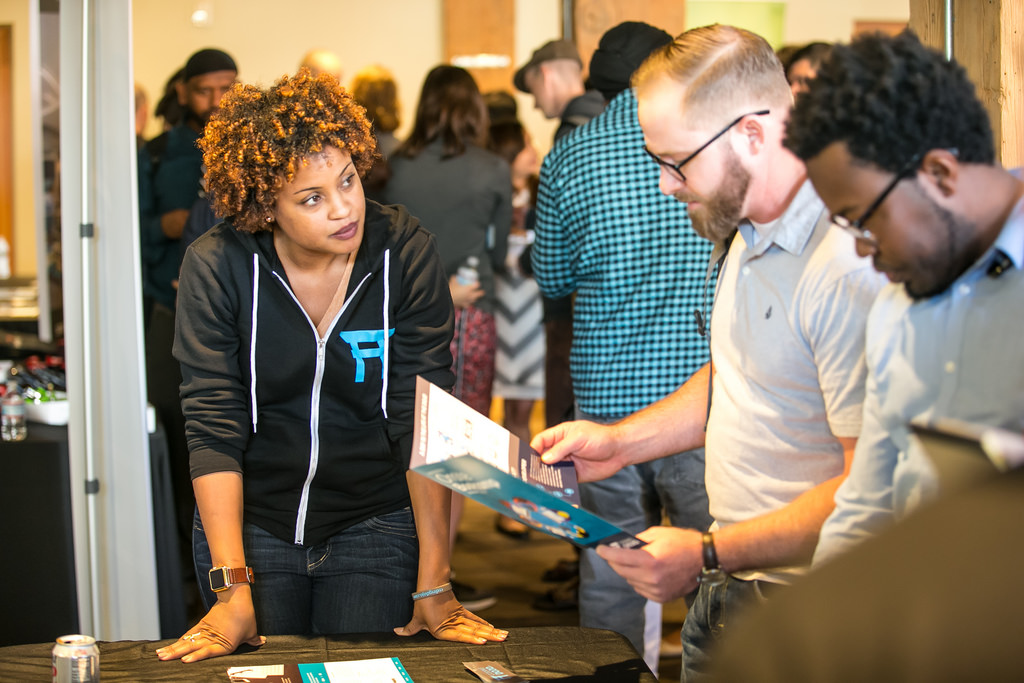Four Trends That Will Shape Recruiting in 2018
Security Management has partnered with the Society for Human Resource Management (SHRM) to bring you relevant articles on key management topics and strategies. This article by Roy Maurer discusses what diversity and inclusion means in building a workforce.
--
This year, more employers hope to make progress in building inclusive workplaces through diversity recruiting efforts and will continue to experiment with new interviewing and selection techniques, according to experts.
Over 9,000 recruiters and hiring managers across the globe identified these trends, among others, as being the most impactful when surveyed by LinkedIn for the professional networking site's Global Recruiting Trends 2018 report.
LinkedIn found more than half of companies already embrace recruiting for diversity, while novel interviewing and selection techniques have generated interest but not enough to knock the traditional, one-on-one interview off its pedestal.
It's Not Diversity Without Inclusion
Building a diverse team will be more than a nice-to-have, becoming a required leadership skillset, said Ashley Goldsmith, chief people officer for Workday, a finance and HR software company based in Pleasanton, Calif. "This new requirement will also be measurable with performance metrics tied to the makeup of teams," she said.
Some fundamental ways that recruiters can improve diversity in their organizations include conducting outreach in local communities; wording job postings to target diverse groups; showcasing diversity in recruitment marketing and interview panels; training interviewers about unconscious bias; and involving employee resource groups in the sourcing, recruiting and hiring process.
"Pretty much universally, this topic seems to be critical for most organizations, especially around gender balance," said Brendan Browne, LinkedIn's vice president of talent acquisition. He added that understanding how to source from diverse talent pools, trying to prevent bias in the assessment and hiring process, and evaluating workplace culture for inclusion are major steps employers can take to increase diversity.
More practitioners are realizing that hiring for diversity is not enough. Employers risk employee disengagement and attrition if diverse hires don't feel included and accepted.
"It doesn't matter that you hired more women or more of whatever it is you needed to look like a United Colors of Benetton ad," said Tim Sackett, SHRM-SCP, a recruiting industry thought leader and the president of HRU Technical Resources, an IT and engineering staffing firm in Lansing, Mich. "If those you hired don't feel like a part of the organization, you'll never keep them anyway."
This level of diversity is really hard, Sackett added. Practicing inclusion takes an entire overhaul of a company's culture and ongoing maintenance. "It's actually easy to check boxes and get to a point where you'll look politically correct as it relates to the diversity of your employees. It's super hard to get to a point where people feel like they truly belong."
HR needs to take a hard look at the organizational culture to make sure that differing opinions are respected and people are encouraged to be themselves.
Modifying Interviewing, Selection
Traditional interviewing is costly and takes too long, and typical selection criteria don't result in effective candidate evaluations anyway, according to experts.
"It's kind of a disaster when you spend 20 hours of company time interviewing someone," Browne said. "Do candidates really need to meet with 10 or 12 people? If you've ever been on an interview and had to come back three or four or five times and meet more and more and more people, it's exhausting."
Instead, forward-looking companies are exploring skills assessments, job tryouts and hiring for potential instead of experience. LinkedIn found that a majority of employers are interested in using:
- Online soft skills assessments that measure traits like teamwork and curiosity.
- Job auditions, where candidates are paid to do real work while supervisors observe them.
- Informal team interviews with potential co-workers, where both sides have a chance to talk about the role and gauge whether there is a fit.
Selection criteria are also undergoing a refresh. More employers struggling to find perfect candidates will adopt the mantra of hiring for attitude and training for technical skills, experts believe. "Not being 100-percent qualified is no longer a deal-breaker," said Matt Ferguson, CEO of talent acquisition solutions company CareerBuilder. He referenced a recent CareerBuilder survey that showed 66 percent of organizations plan to train new workers who may not have all the required skills but show potential to excel.
"While hard skills reign in sectors like technology and health care, less-teachable soft skills will continue to be critically important—even in a more technology-driven work environment," said Alan Stukalsky, chief digital officer for Randstad North America, the U.S. division of the global staffing and HR services provider. "Employers will increasingly focus on training new hires, especially when they find the culture fit they are looking for or superb soft skills."
That's exactly what Maren Hogan, CEO of Red Branch Media, an Omaha, Neb.-based B2B marketing firm for HR technology, does. "When I hire people, I'm not hiring a job description," she said. "When I'm looking to add another employee to my team, I'm looking at their attitude, how they approach communication with me, what it is that moves them and how they work best. Do they value learning and skill development?"
In addition to prehire assessments and informal group evaluations, Hogan recommended mapping out the type of personality you want in the role. "Considering what traits will provide value to your organization will give you a candidate persona that can lead everything—from where you advertise the job to the language used in the ad itself."
© 2018, SHRM. This article is reprinted from https://shrm.org with permission from SHRM. All rights reserved.
